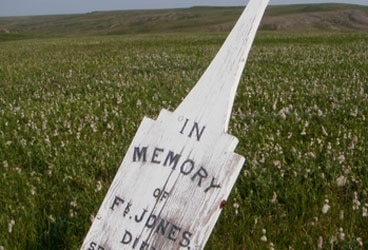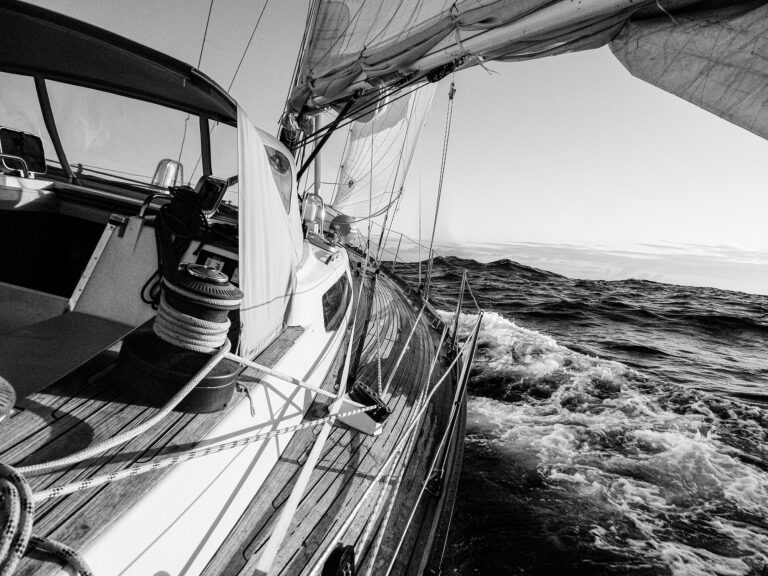
No happy endings: This desolate whaler’s grave on Herschel Island, in the Beaufort Sea off Canada’s Yukon Territory, suggests to the author, who’s approaching the end of his shipboard reading of Moby-Dick, that Melville’s story may well conclude on
We’ll start this one off with a confession: I’ve never made it through Herman Melville’s classic, Moby-Dick. As a graduate of a liberal-arts institution with a degree that emphasized more than a passing acquaintance with American literature-not to mention the fact that I’m also a sailor-I realize that this admission borders on the blasphemous. And it’s not like I didn’t try. Even after college, on more than one occasion did I tuck a paperback edition into the recesses of my seabag at the outset of an offshore trip. But I never, ever got through the first few pages.
“Call me Ishmael”? It’s more like call me an idiot.
Anyway, as we continue on our voyage into the Northwest Passage aboard our 64-foot cutter, Ocean Watch (www.aroundtheamericas.org), I once again have my well-traveled, if not well-read, copy of Moby-Dick along with me. And this time, for several reasons, I’m making some actual headway.
In a voyage that’s had more than a few twists and turns thus far, whales have provided a thread for tying the trip together. After a few sightings at the outset of the trip up the Inside Passage from Seattle, we had our first magical encounter with a big pod of orcas right after we entered Chatham Strait following a couple of days of sailing outside in the Gulf of Alaska. Then, about a week later, shortly after leaving Juneau, we deployed our Little Wing kayaks while surrounded by another big pod of whales, this time humpbacks. Being square in the midst of these remarkable creatures was an unforgettable experience.
Once we’d made it through the Bering Strait and reached the distant Alaskan town of Barrow, we began to meet folks like Harry Brower, an Inuit whale captain whose family has hunted whales for subsistence for many generations, and Craig George, a wildlife biologist who’s studied the bowhead whale for nearly three decades. Craig loaned me his copy of “Ice, Whales, and Men”, a fascinating history of whaling in the western Arctic by author and sailor John Bockstoce; Craig and the author sailed the Northwest Passage together in the late 1980s. The more I learned, the more eager I became to learn more.
In his book, Bockstoce tells the story of remote Herschel Island, where, at the turn of the last century, the era of commercial whaling came to a close. Just last week, Ocean Watch dropped anchor in the same harbor off Herschel where a fleet of whaling ships spent a winter more than 100 years ago held fast in the ice to await the spring thaw; when the thaw came, they’d be able to get a jump on the new season. We wandered ashore and had a good look at the remains of the whaling station, the remnants of which are preserved in a protected Canadian park. The graveyard at the head of the bay was marked with the headstones of several of those last whalers, the ones who never made it home.
It’s all given me a new and inspired outlook on whales and whaling. I’ve even reached page 400 in Moby-Dick. Just another 150 to go. I’m not entirely sure how Melville wraps it up, but I’ve got my suspicions. As with those poor souls who never made it off Herschel Island, I’m not seeing a happy ending.







